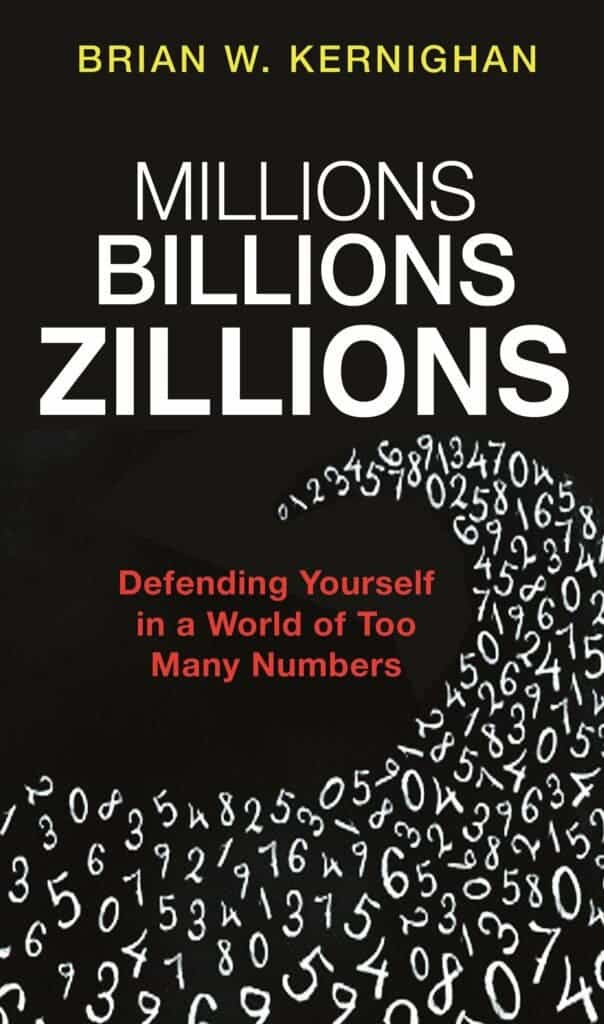Whether in the media or day-to-day conversations, we often hear about millions or billions of ‘stuff’. That stuff may relate to money, population, or the barrels of oil in the national reserve. But the reality is that humans aren’t meant to intuitively grasp very large numbers — and this can set you up for confusion, at minimum, or make you a prime target for manipulation and trickery, at the worst.

“Millions, Billions, Zillions: Defending Yourself in a World of Too Many Numbers”
By Brian W. Kernighan
Princeton University Press, 176 pages | Buy on Amazon
In his latest book, “Millions, Billions, Zillions: Defending Yourself in a World of Too Many Numbers” (where ‘zillions’ represents just a generic word that describes very large numbers of no particular quantity) Brian Kernighan challenges us to stop assimilating numbers at face value and instead actually think about them.
Kernighan, a professor of computer science at Princeton University, uses the phrase “number numbness” to describe the feelings many of us have when we’re confronted with too many numbers to assess to the point we just don’t care if they ‘make sense’.
Here’s an excerpt from an article posted on an environmental website that Kernighan uses as an example in his book:
“Fifty billion plastic water bottles are discarded annually by Americans; 20 billion barrels of oil are used to make this plastic and 25 million tons of greenhouse gases are released into the atmosphere.”
Do you notice something fishy with these numbers? What’s more, were to you read this article in full, would you have given these numbers more consideration or would you just have gleaned pass them without a second thought?
Throughout his book, the author urges readers to always use common sense and take advantage of the power of quick estimates in order to spot errors or downright falsehoods in numbers.
In this particular example, let’s start with the first figure. Judging from your own life experience, you could say that you typically purchase a bottle of water somewhere between every day to one per week. One per week means roughly 50 per year per person (Kernighan always advises to round off numbers because the errors tend to cancel each other out) or 15 billion per year if you multiply it by the population of the United States (it’s always handy to know ballpark figures for common stats, the author advises). One per day is about 100 billion per year. So, 50 billion sounds reasonable.
But what about 20 billion barrels of oil? Well, that means it takes two-fifths of a barrel to make one plastic bottle — that’s 17 gallons of oil. Obviously that doesn’t make sense for a person that has minimal life experience, such as how much mileage you get with a car for a gallon of gas. Do Americans use an order of magnitude more oil for plastic bottles than they do for driving around? You be the judge.
Throughout his book, the author offers readers the mental tools and techniques that anyone can use to spot errors, doctored figures, and misleading statistics. Some chapters focus on common problems people encounter when converting units of measurement, while others expose the various ways biases creep into statistics and how to best spot them.
All in all, this is a must-read for anyone looking to cure their “number numbness”.






